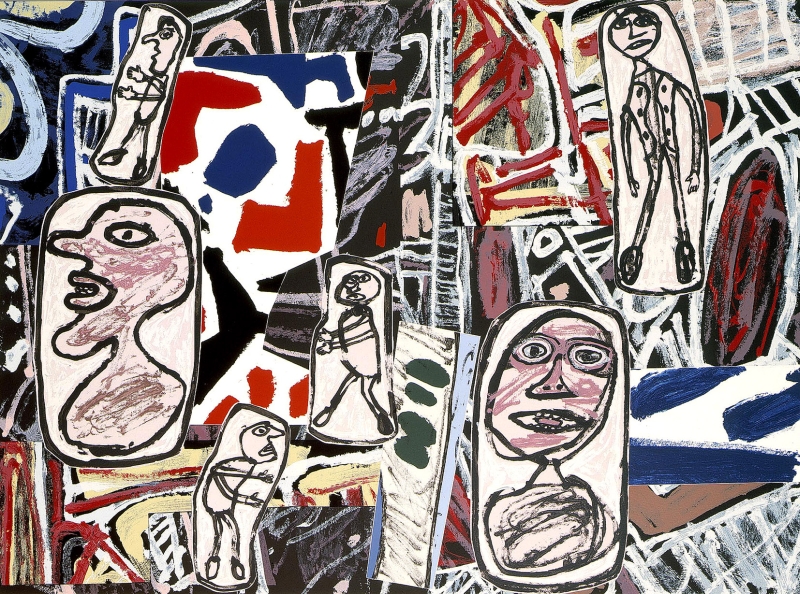Jean Dubuffet created prints with ardent zeal for 40 years, up until his death in 1985. These prints embody an integral part of his oeuvre. Starting with lithographs, he continued to experiment with various techniques. These inventive techniques mark out intense and active periods within his lifework. Jean Dubuffet created his first lithographs at the age of 43, in 1944. He literally fell to the lithographic stone and he made his first major graphic series in a few weeks. Playing the piano, Grinding coffee, Mending socks “…are but everyday small routines; yet if we overlook from their familiarity and take a closer look at them, they suddenly become so unique, so touching”.
Matter, one of Dubuffet’s major adventures, gains its full meaning in his lithographs. The artist’s interest was aroused at his very first encounter with the rough material. Stone is a mineral matter par excellence, which opened up new paths for the artist. It just touched him in his series, Matter and Memory (Matière et mémoire), leaving a mark on the works; however, in his subsequent series, Walls (Les Murs), he already disclosed the real essence of the material, many years before the renowned Texturologies and Matériologies series and his major serial work, Phenomena (Les Phénomènes). Dubuffet left a surprisingly major space for improvisation, as if he were playing with the elements and colours, superimposing and printing them onto one another, as he depicted a multitude of figures born under the artist’s – and the viewers’ – very eyes: as if “he had become a hunter of images taken by surprise, using lithographic stone, the patterns of which did not pre-define the figures to take shape on it”.
In 1974 Jean Dubuffet established the foundation bearing his name, with the aim of maintaining and making accessible to the public the major part of his work in a systematic manner. For eleven years, up until his death, the artist continued to donate artworks from his private collection, together with his full archives, to the foundation. The archives provide an inexhaustible resource for learning about Dubuffet’s ideas and activities in literature, music and the visual arts. The Foundation houses over a thousand artworks – paintings, sculptures, architectural models, gouaches, drawings and prints – encompassing the artist’s full oeuvre. The Foundation keeps the collection – including the outstanding original décors and costumes from the Coucou Bazar performances – in Périgny-sur-Yerres (Val de Marne), on the premises where Dubuffet’s most significant creation, Closerie Falbala, was once constructed.


